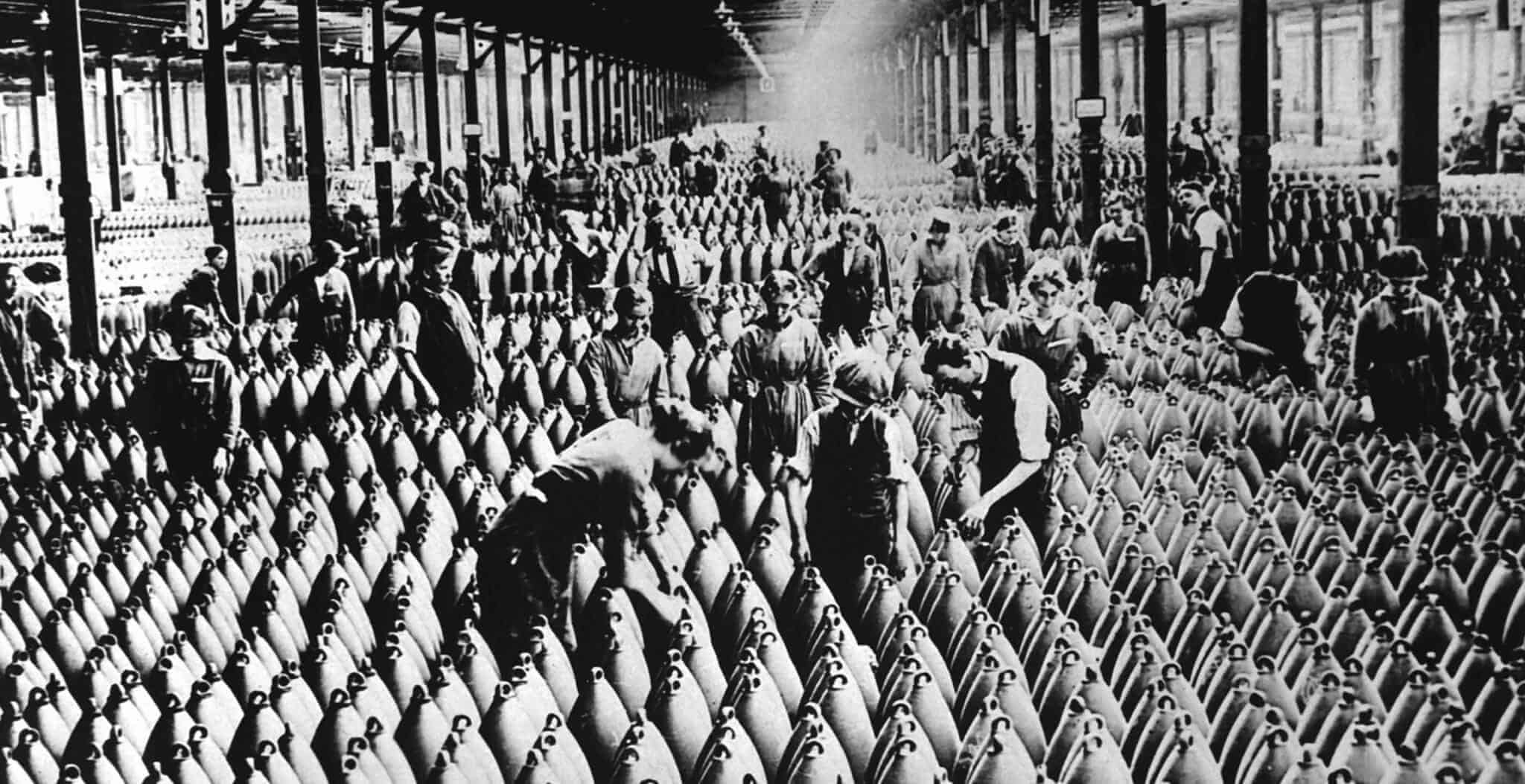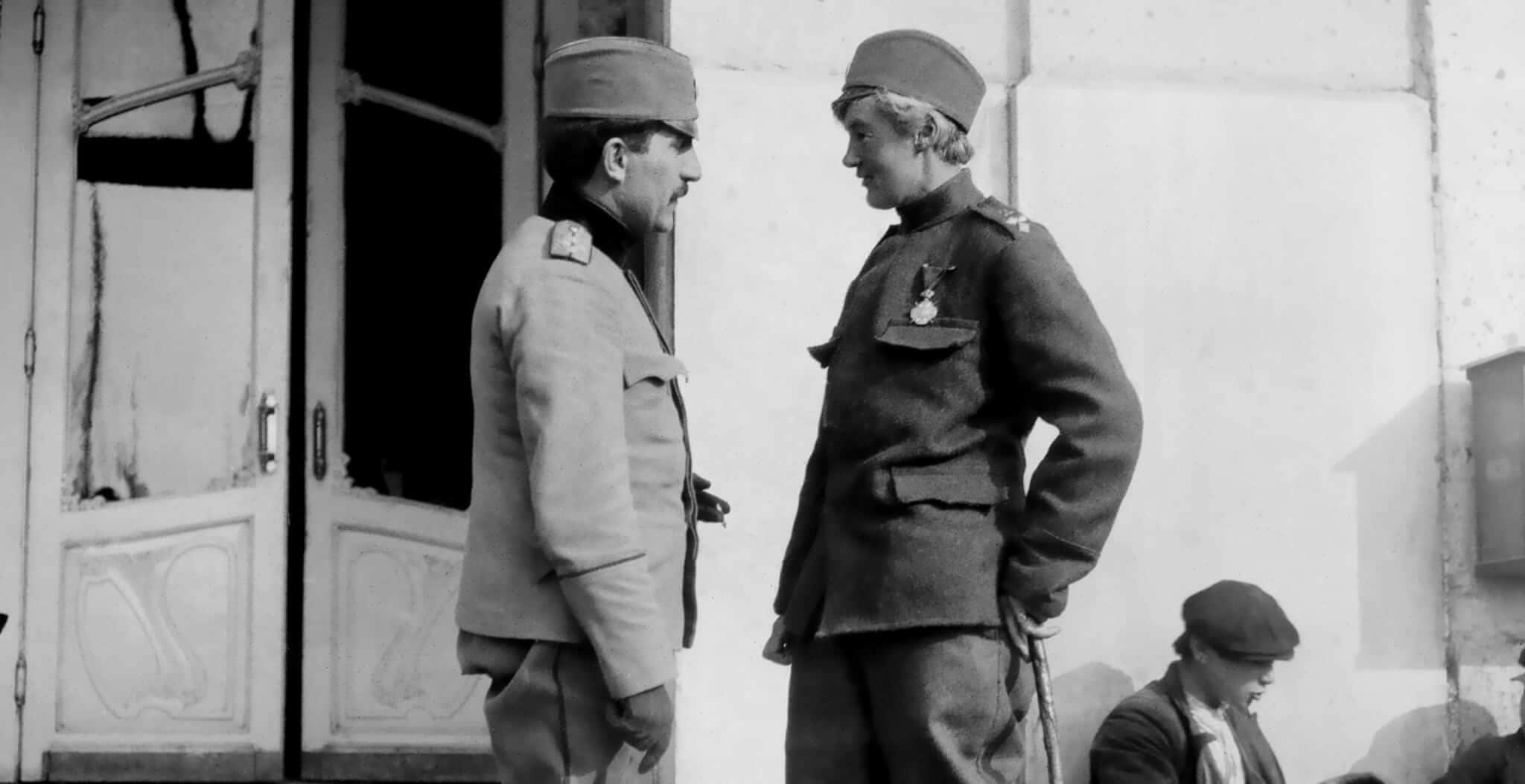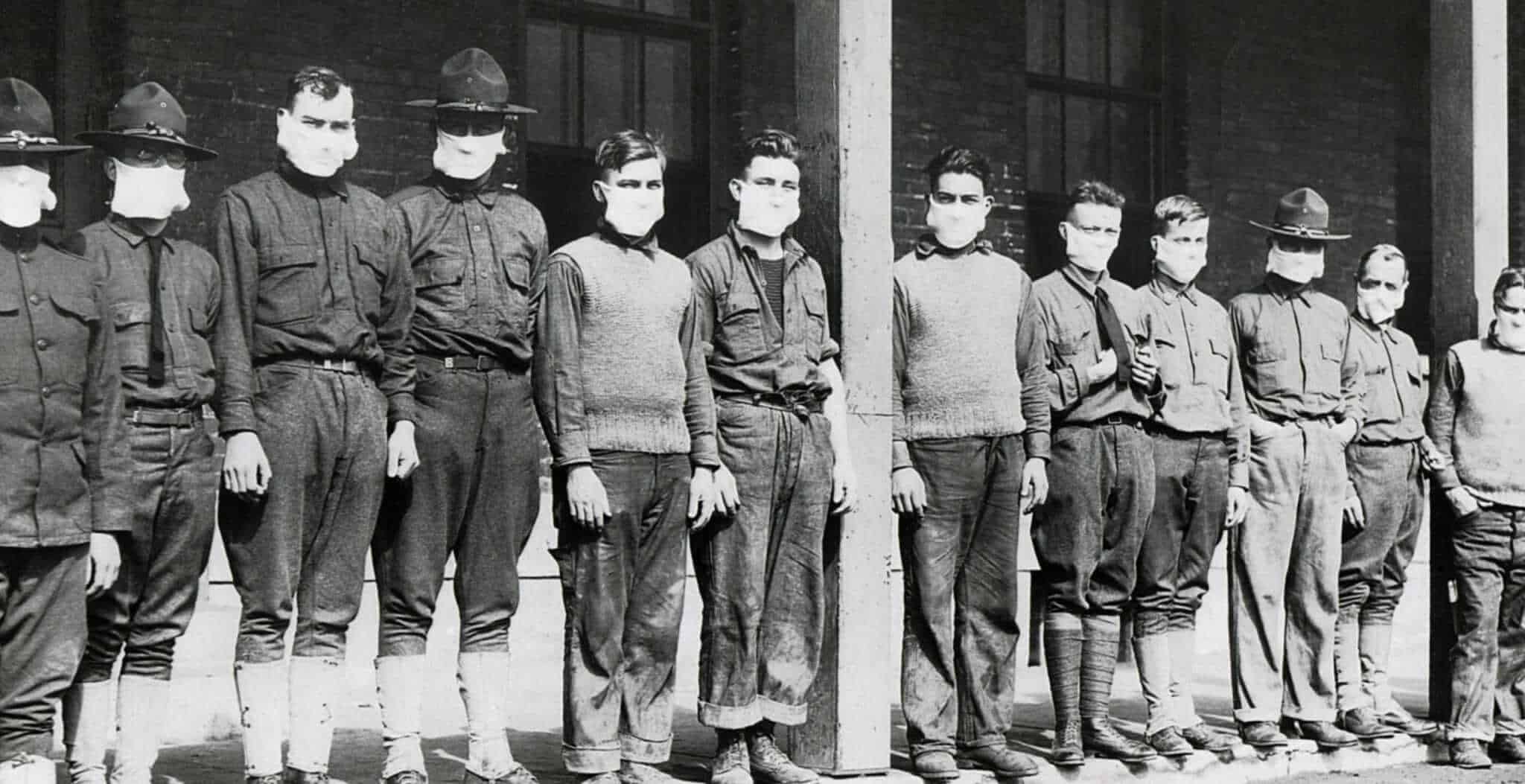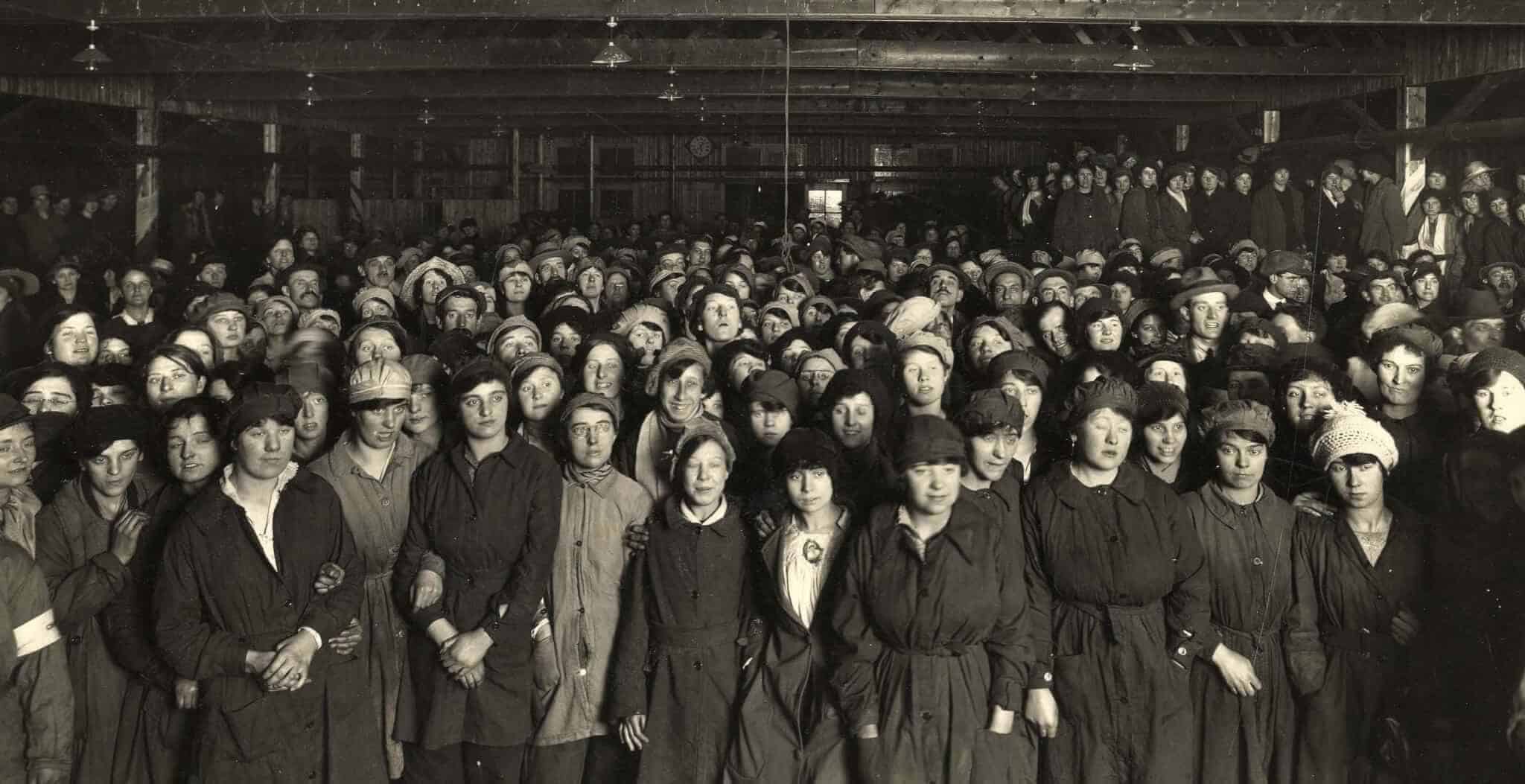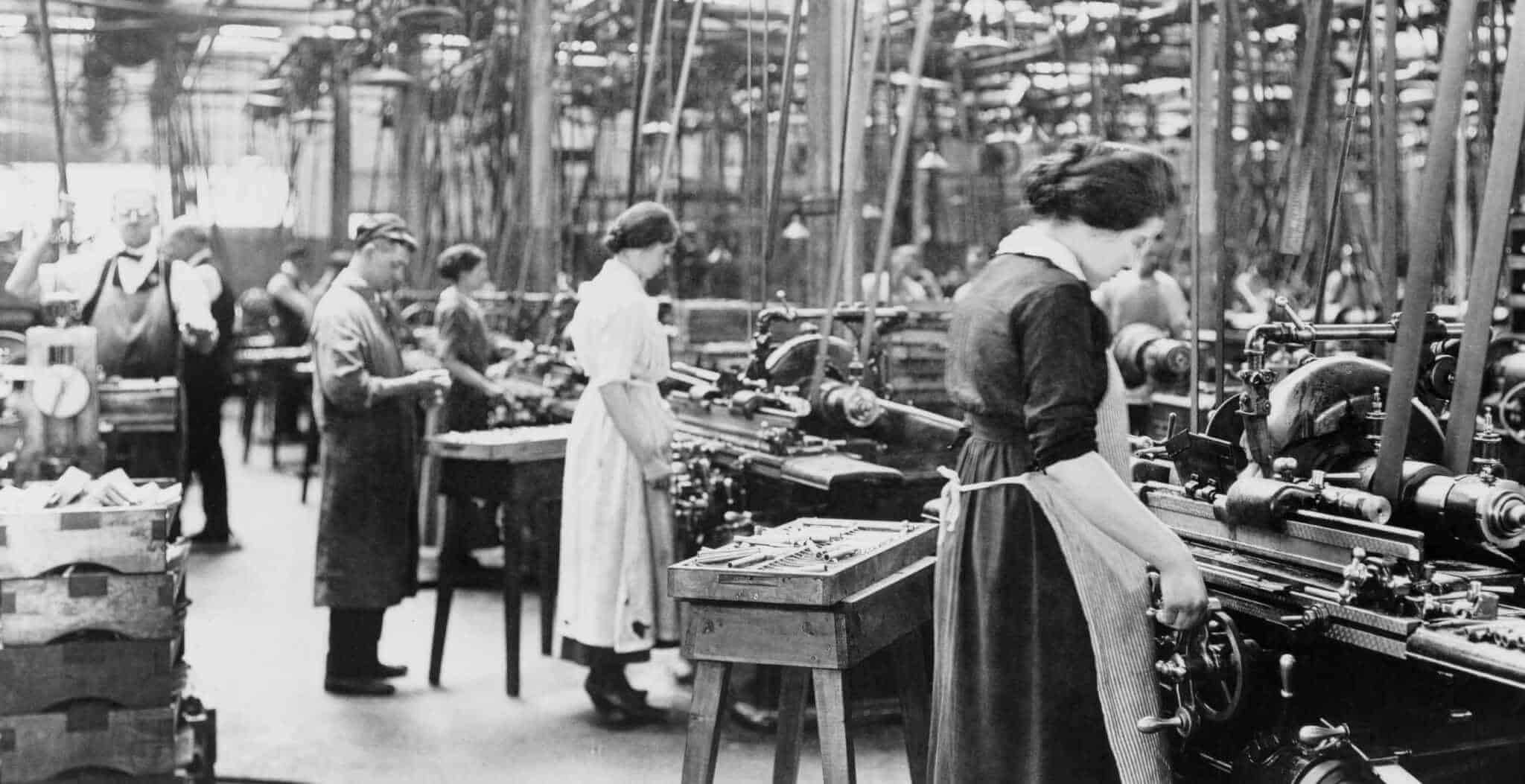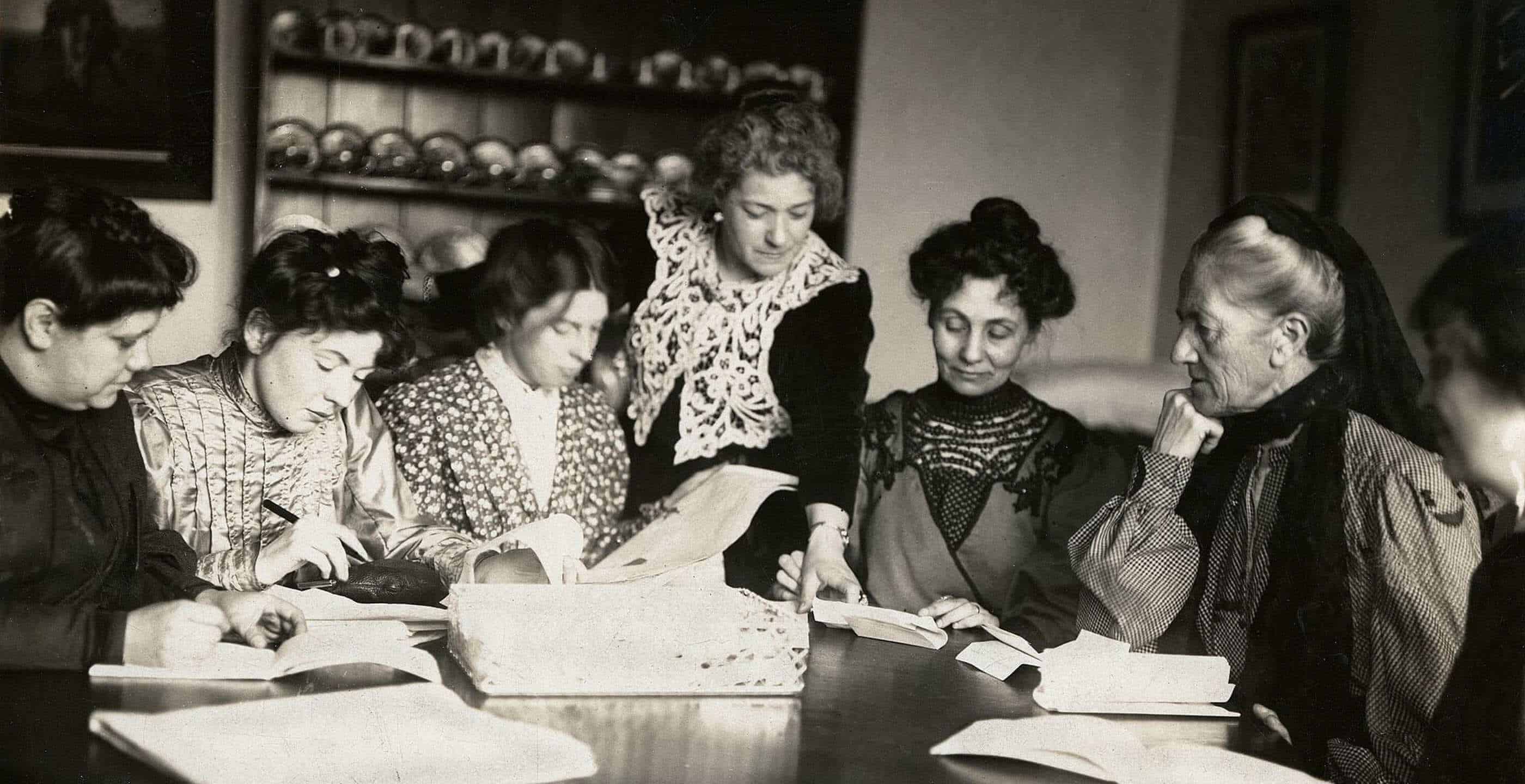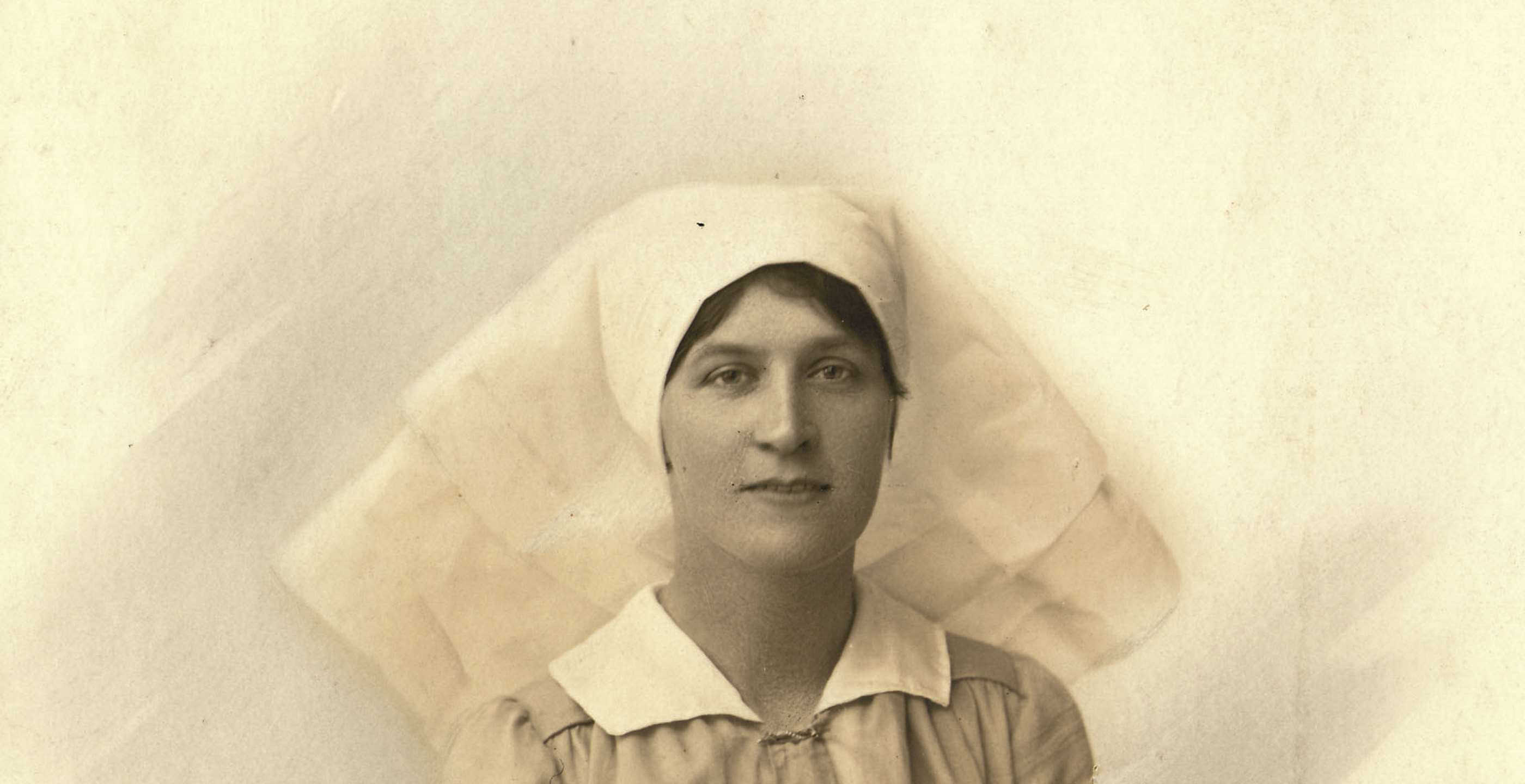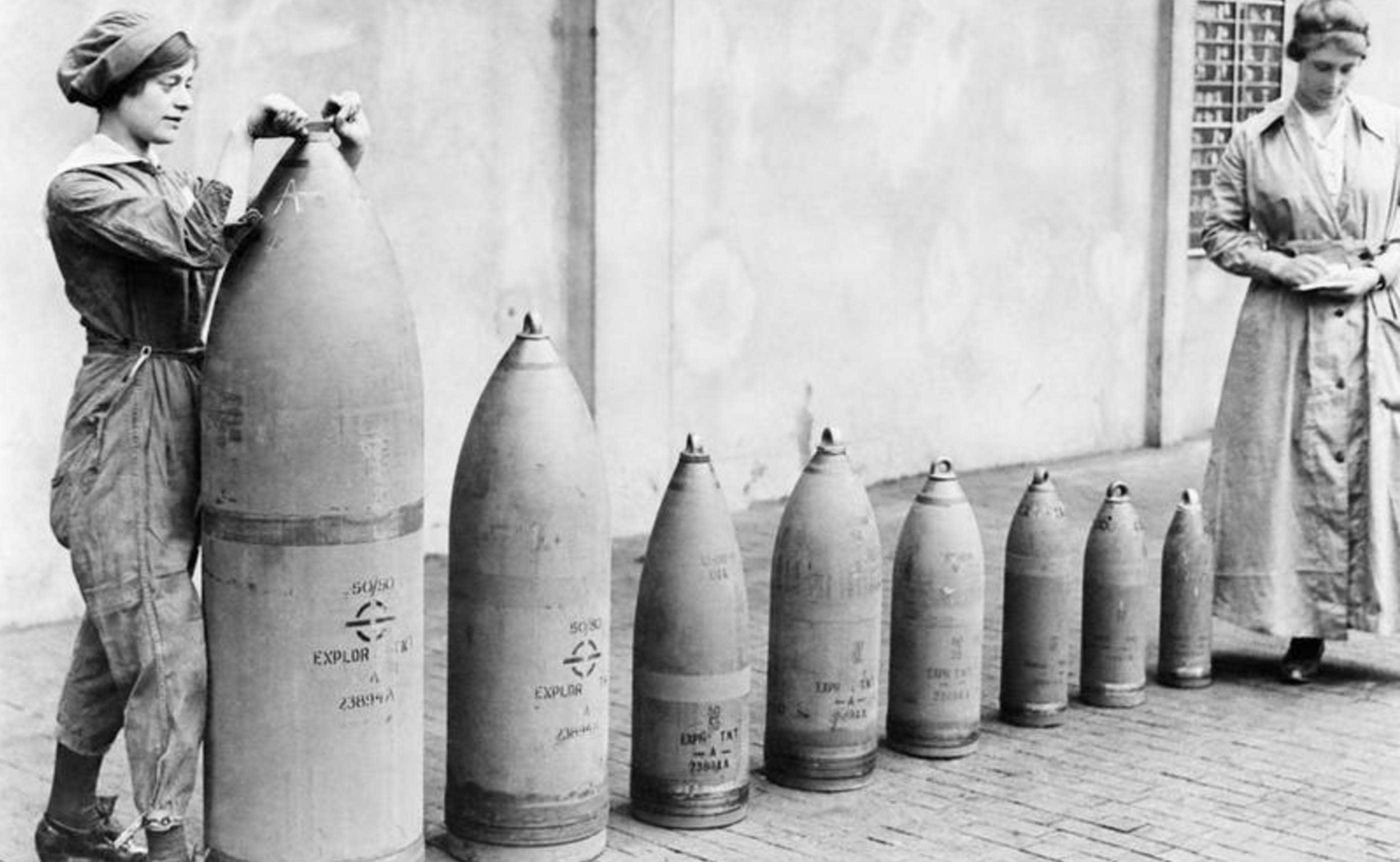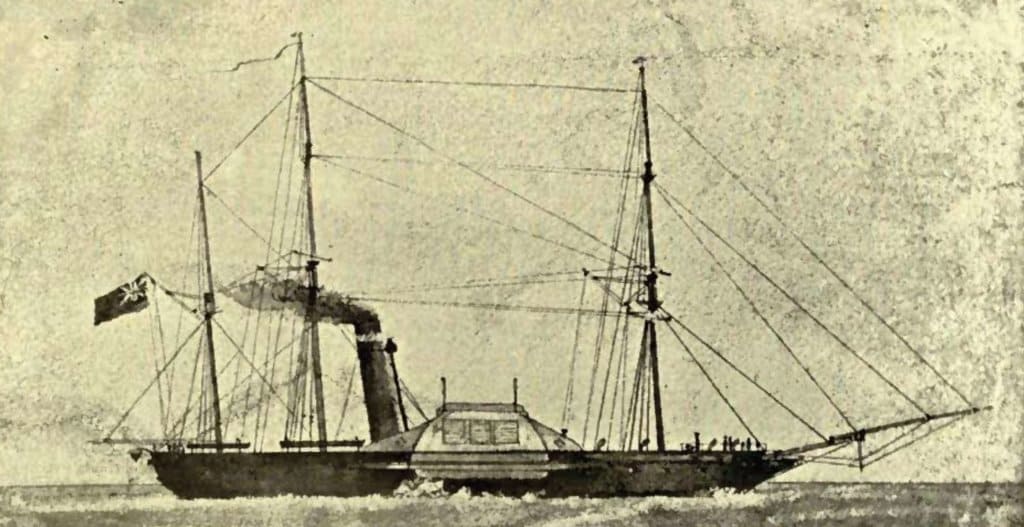As the war progressed and more and more men were required to maintain the British army in the field, on the Home Front a manpower crisis loomed. This problem was largely tackled by mobilising women to replace the men who had gone to fight.
The role of women in securing victory cannot be underestimated; indeed, one of the reasons that Germany lost the war in 1918 was that she never succeeded in fully mobilising her female population.
Although women had worked in some industries for many years, the First World War brought women into the workplace on a scale never before witnessed. Not only this, but in many cases these women came from the middle classes who had never previously experienced manual work.
The most usual occupation for women pre-war was domestic service. This was ‘women’s work’, poorly paid and considered inferior to ‘men’s work’. It was also expected that women would give up work once they were married.
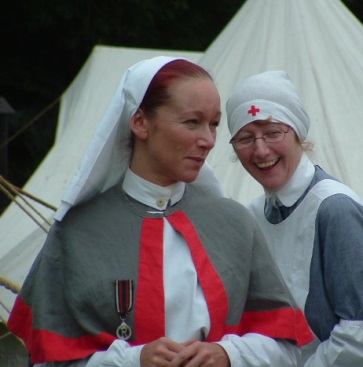
Nursing was virtually the only area where women could experience the war at the front
After the introduction of military conscription in March 1916, it became vital to mobilise women to fill the gaps in the factories, fields, transport and other essential areas.
In the fields, the Women’s Land Army employed over 260,000 women as farm labourers, a vital role as allied merchant ships bringing supplies from overseas were being menaced by German U-boats at sea.
Women living in the country were also encouraged to work together with the Department of Agriculture to grow and preserve food. In 1915 the Secretary of the Agricultural Organisation Society (AOS), John Nugent Harris appointed Canadian Madge Watt to set up Women’s Institutes (WIs) across the UK. The Women’s Institute movement had started in Canada in 1897 and Mrs Watt used her own experience of the Metchosin Women’s Institute as a model for those in the UK. The first W.I meeting in Britain took place at Llanfairpwllgwyngyll on Anglesey, North Wales on September 16th 1915.
The women who volunteered to work in industry were often sent some distance from home. There was great debate about the effect of this type of work on the morality of young women, particularly as many were away from their parents for the first time in their lives, and they had money from their wages to spend.
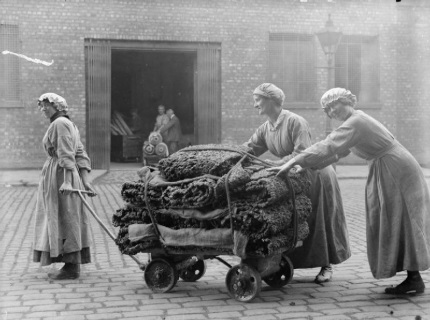
Female warehouse workers at the factory of Charles Macintosh and Sons Ltd in Manchester, 1918
In addition, many munitions girls suffered ill health from the chemicals with which they worked. They were often nicknamed ‘canaries’ because of their yellow skin, caused by exposure to TNT. Around 400 women died from overexposure to TNT during World War One. By mid 1917, it is estimated that women produced around eighty per cent of all munitions.
Another area where large numbers of women were employed was transport. Women worked as conductresses (and occasionally drivers) on buses, trams and underground trains.
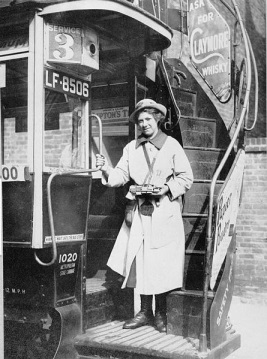
London General Omnibus Company bus conductress, 1918
Between 1914 and 1918, an estimated two million women took on jobs which had been previously been filled by men, an increase from 24 per cent of women in employment in July 1914 to 37 per cent by November 1918.
The war undoubtedly led to the social advancement of women and also to the political reward of the vote being granted to women in the UK in 1918. Through their war work, women in Britain were beginning to overcome prejudice and break down social taboos.
Published: 20th January 2015.
